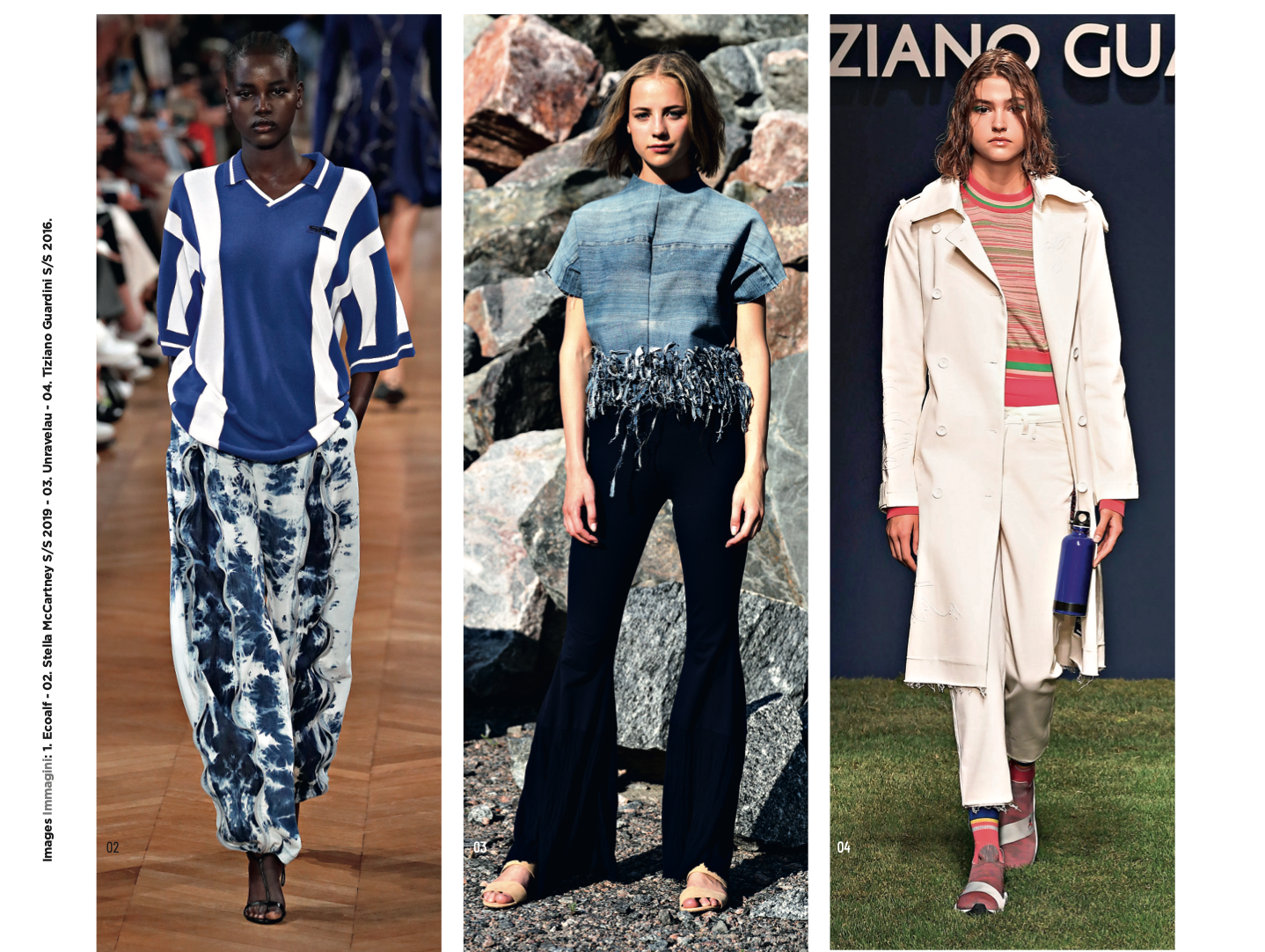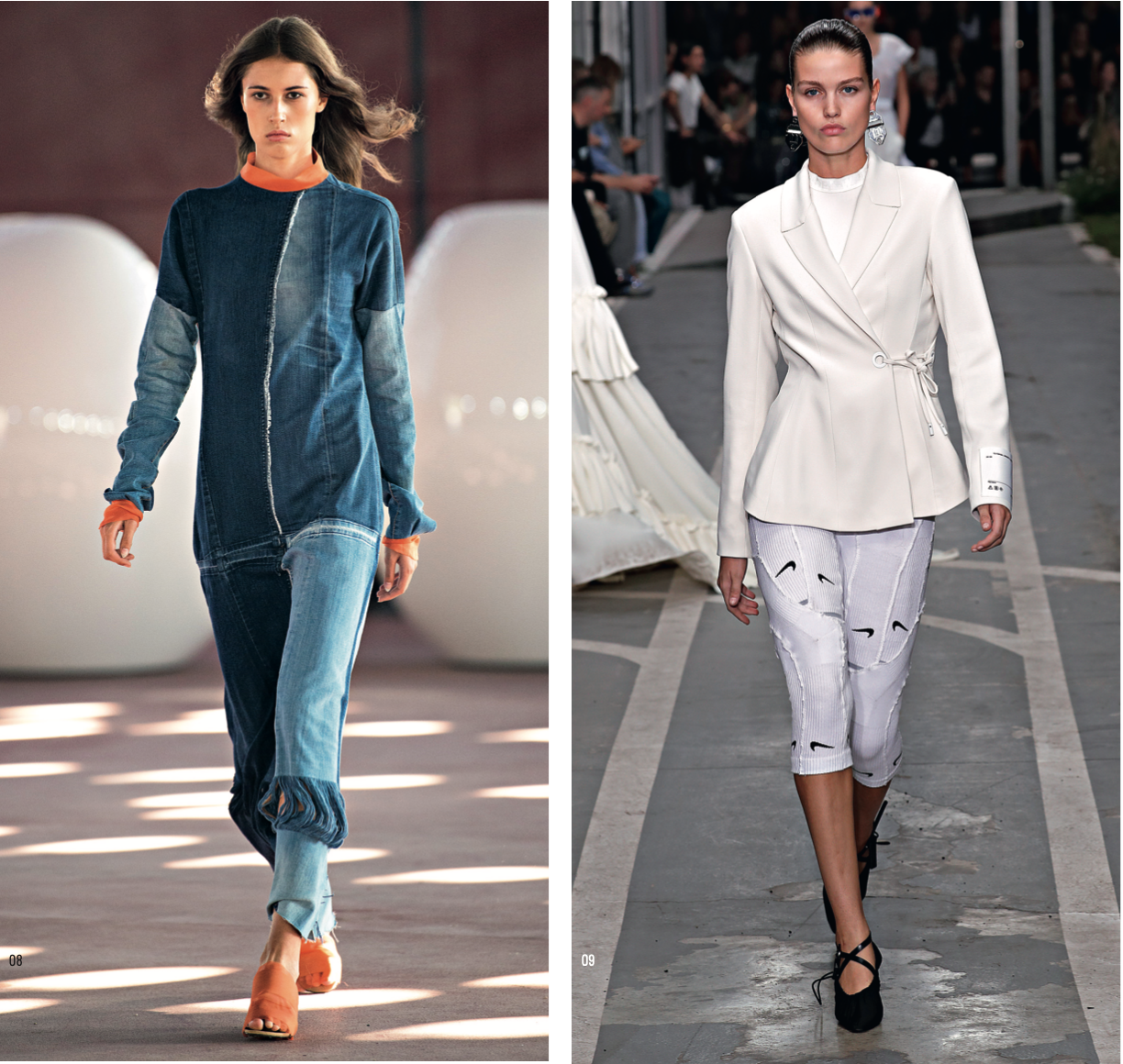The Infinite Season of "Responsible" Textiles
Young Dutch designer Laura Meijering upcycles denim with her brand Unravelau.
By Barbara Chiodi on January 15, 2019

Organic cotton and denim: two sides of the same coin
Unlike the conventional crop, organic cotton uses no synthetic pesticides and fertilisers and relies on crop rotation and composting, which promote healthy soil and help to lock carbon dioxide in the ground and so to mitigate climate change. Organic cotton also uses less water than traditional cotton because it relies on rainfall rather than irrigation. Ethical fashion pioneer Stella McCartney uses plenty of organic cotton and consequently her denim – which is widely used in the summer collection, especially tie-dye – has the same organic, certified origin. Denim is a fashion classic that, in recent seasons and especially for summer 2019, is fast becoming a hot trend. Responsibly produced fashion and denim are the focus for ISKOTM, the world’s number one denim producer and part of Sanko Tekstil, the textiles division of Sanko Group, which is a major investor in renewable energy and environmental protection. ISKOTM Brand Director Fabio Di Liberto talks about a veritable “culture of denim”, a responsible “denim mindset” throughout pro- duction, from spinning to finishing, and this responsibility reaches all the way through to the end customer, to the people – a term he much prefers to the oft-used ‘consumers’. Innovation, which Di Liberto likes to define as “positive responsibility”, has led ISKOTM to work on its entire supply chain, obtaining certifications recognised by bodies that supervise the Life Cycle Assessments of products, and to create ISKO Earth FitTM, a collection with the highest ISKOTM certifications or EU Ecolabel and Nordic Swan Ecolabel. ISKOTM also partners Green Carpet Fashion Awards, which every year rewards sustainability in fashion, including the best emerging green designer with the ‘Franca Sozzani GCC Award for Best Emerging Designer’, which last year was won by Roman designer Tiziano Guardini. And Guardini, who has made sustainable materials the foundation of his business ethic, still uses ISKOTM denim in his work, including his latest summer collection showed in Milan last September.

Upcycling, the new frontier in eco-fashion
Transforming abandoned fishing nets into such a high-performing and widely used yarn demon- strates just how many eco-sustainable materials are already out there. When it comes to Econyl®, there is obviously a complex process involved in creating the finished product, but the work of many designers is proving that great things can be done with a piece of fabric (even if it isn’t con- nected with clothing) or with a used garment. There is a whole category of ‘hybrid’ materials that acquire new value if they are reused and added to new contexts. ‘Upcycling’ is the practice of using a waste product or material for a new purpose, giving it new life and even added value. Young Dutch designer Laura Meijering upcycles denim with her brand Unravelau, the latest collection of which used jeans donated from Dutch people, while Kevin Germanier, a recent icon of eco-fashion, takes unsold and/or faulty fabrics, buttons and trimmings and enhances them with iridescent effects. Spanish brand Ecoalf makes clothing from refuse such as coffee grounds, breaking it down into a nano-powder which is then divided into ‘batches’ and mixed with recycled polyester or recycled nylon polymers to make the yarn. Companies such as the German brand Jan’n June, Marimekko and Eileen Fisher prefer to use Ecotec® cotton yarn made with an exclusive Italian process that transforms 100% pre-consumer cotton into a cutting-edge yarn that saves up to 77.9% more water than conventional cotton (LCA study). Examples of upcycling were also seen on the Paris runways from Julie de Libran for Sonia Rykiel, with shopping bags made from recycled market stall awnings, and Virgil Abloh of Off-White, who created sweaters and leggings with a patchwork of Nike socks.
